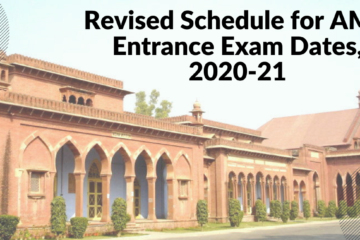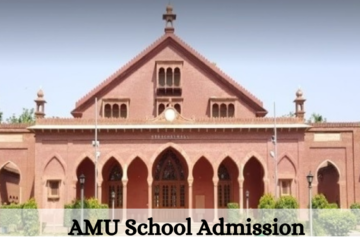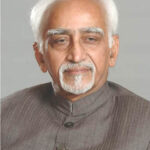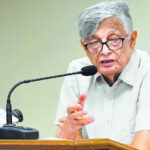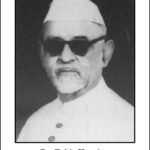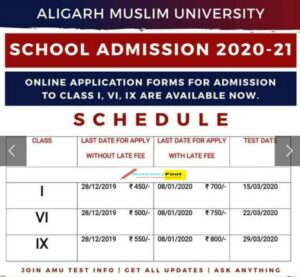AMU Maulana Azad Library

Maulana Azad Library is the central library of the Aligarh Muslim University, which is legendary for its invaluable collections of manuscripts, rare books, and artifacts. M.A. Library currently holds quite 13 lakh volumes of books and subscribes to popular research journals and databases. The library meets the requirements of its students, academics, and research scholars with a good range of library services provided by 110 college and departmental libraries, including Engineering College Library, Medical College Library, science Cyber Library, and Ajmal Khan Tibbiya College Library. Also, according to Wikipedia, Amu Maulana Azad Library is one of Asia’s largest libraries.
The Central Library of the Aligarh Muslim University, popularly referred to as Maulana Azad Library, is one of the most important university libraries, which possesses about 18,00,000 volumes of books and 55,097 current journals in hard and soft copies.
The inspiration of the Library was laid in 1877 at the time of multinational of the Mohammedan Anglo Oriental College by Lord Lytton, the then Viceroy of India and it had been named after him as Lytton Library. This grand seven-storied building was inaugurated by Late Nehru, the primary Prime Minister of independent India in 1960 and therefore the Library was renamed as Maulana Azad Library, after an excellent scholar, educationist, and statesman, insurgent and therefore the first Education Minister of the independent India.
M.A. Library is that the Central Library of the University with quite 110 sister libraries (college/departmental libraries). It’s a World famous repository of rare manuscripts and books in Urdu, Persian and Arabic languages. One among the foremost priced a part of the Library is its Manuscripts Division which possess about 16,000 rare and invaluable manuscripts on Islam, Hinduism, etc.
M.A. Library has introduced state-of-the-art information technology, and it’s fully automated with LibSys 7.0 software, which connects most 3,000 computers within the University because the centers are in distant states. The 3M security system and three dozen CCTV cameras ensure the safety of the library materials. Over 8,000 students, teachers, and other members visit the Library almost daily.
Aligarh Muslim University's Maulana Azad Library Divisions
Oriental Division in AMU Library
M.A. Library possesses about 1.5 lakh books in Persian, Urdu, Arabic, Hindi, and Sanskrit on most the themes taught within the University. Research scholars of Persian, Arabic, Urdu, History, Islamic Studies, West Asian studies, Unani Medicine, Theology, Mass Communication are its regular users. This Division features a very large collection of rare books published during the 18th and 19th centuries. One among them is that the Latin translation of the celebrated Arabic works on optics, Opticam Prafatis by Ibn-al-Haitham (965-1039 AD) which was published in 1572 & other on Avicennas (Ibn-e-Sinas 980-1037 AD) Al-Qanun (1593 AD). Digitization of the rare printed books is ongoing and almost half the collections of Manuscripts and quite 15,000 rare books have already been digitized.
Manuscript Division
It consists of many rare manuscripts. Among its rarities is the oldest manuscript , a copy of the Quran preserved within the Library, which is over 1400 years old. It’s a fraction of the Holy Quran transcribed by Hazrat Ali, the fourth caliph of Islam, written on parchment in Kufi script. Another rare manuscript is the Halnama of Bayazid Ansari, a replica of the Nahjul Balagha of Hazrat Ali. Several firmans (decrees) of the Mughal kings like Babur, Akbar, Shahjahan, Shah Alam, Aurangzeb, etc.
Another prized possession of the Library may be a Shirt (Kurta), which warriors of Mughal Emperors wore. Among the Mughal period paintings may be a Red Tulip, a masterpiece of Mansoor Naqqash, the court artist of Emperor Jahangir. Valuable Sanskrit works on Hinduism translated into Persian are available within the Library. One among them may be a Persian translation of Bhagwat Geeta by Abul Faiz Faizi. Other possessions are the Telugu and Malayalam manuscripts written on palm leaves.
Conservation & Binding Section
The Library is extremely much concerned with the conservation and preservation of the World’s documentary heritage. It maintains a Conservation Laboratory for manuscripts and Bindery for books, journals, newspapers etc. At the core of our work, is that the care and understanding of the collections. The Library uses a mixture of “preventive” and “interventive” activities. Reduction and wherever possible, elimination of the causes of degradation is that the best and least expensive strategy for collection.
Collection Development Division
This Division is liable for selecting, ordering, and acquiring books and other documents. In selecting books and reference sources, identification of the requirements of educational community, current fields of study and academic levels are taken under consideration. The resources are acquired after combing through lists, reviews, suggestions of subject experts and by visiting book fairs etc. Gift & Exchange is additionally one among the important activity of the Library where documents of the many languages are received as gift especially in Urdu, Arabic and Persian. Individual authors also like better to donate copies of their works. Private collections from eminent personalities also are received as gift from time to time.
Circulation Division
The Circulation Division of the University Library provides open access for issuable books to its students, faculty and staff. Users can attend stacks directly for selection of the specified books and after selection can borrow them.
Periodicals Division
This Division is liable for collecting and managing the periodicals which contain the newest information on current developments. The Library makes every effort to acquire the utmost number of journals on all subjects of studies. This Division also procures and manages the present newspapers and general magazines. at the present , about 700 journals in text and 16000 e- journals are subscribed additionally to some World famous databases for research and reference.
Computer Applications Division (CAD)
The Division has started housekeeping operations in Acquisition, Periodical, Technical and Circulation Divisions. The Library may be a a part of the fiber optic based campus LAN. Of 175 computer, 100 computers are exclusively available for the utilization of research scholars and school members within the Library. Computer Applications Division designs & develops many utility software for the graceful running of library aside from maintenance of main Library software i.e. LibSys. Training and assistance is also given to users and staff of the university regarding information retrieval and data entry.
Computer Applications Division (CAD)
The Library provides campus wide access to online resources through a well-equipped Computer Lab having 100 nodes. This Centre provides access to the subscribed also as open access resources available to the University. CDs of lectures of IITians, Medical tutorials, reference documents, etc. also are accessible within the Digital Resources Centre.
Research and Reference Section
The reference tools available in print form during this Section are mainly the dictionaries, encyclopedias, bibliographies, directories, indices, geographical sources, subject dictionaries, statistical sources, calendars, yearbooks, biographies, gazetteers, census reports statistical information sources, factual information sources etc. The staff working within the section guide students and other searchers in locating and providing the specified material out of the reference sources.
Sir Syed Section
The Library features a separate room during which books written by Sir Syed also as on Sir Syed are kept. The Aligarh Institute Gazette started by Sir Syed in 1866, Tahzeeb-ul-Akhlaq started in 1870 and Aasar-us-Sanadeed (about monuments of Delhi) also are available in Sir Syed Section which is consulted widely by scholars from India and abroad.
Braille Section
Reading Halls
There are six large reading halls aside from eight small reading rooms with a capacity of about 2000 students at a time.
Newspapers Reading Area
Almost all current newspapers and magazines in English, Urdu, and Hindi are available within the Library. Back files of some reputed newspapers are also being preserved and maintained.
River Ganga Repository
The purpose of River Ganga Repository is to gather, organize and make accessible to the planet, the literature and other information concerning the river Ganga which can be utilized in cleaning and rejuvenating the river Ganga. AMU has already gathered variety of books, reports, dissertations and theses which are now a part of the repository.
AMULIBNET
M.A. Library started AMULIBNET in 2012 to facilitate the sister libraries to upload the bibliographic information of their collection to the centrally located server to appear on OPAC.
Library Collections
The Library collection comprises of about 18,00,000 documents including books, periodicals, newspapers, theses, dissertations, reports, pamphlets, manuscripts, paintings, photographs, CDs, microfilms, databases, e-books, talking books etc. There are about 15,000 theses and dissertations forming perhaps the most important collection of such documents within the Country. Besides text collections of about 13,00,000 books, about 1,20,000 e-books and three ,00,000 full text theses are available online. In fact, the Library performs the functions of a reference library thus far because the books and manuscripts in oriental languages are concerned.
Library Services
The Library provides a good range of services to its users including retrieval of data , orientation, assistance in locating/searching of documents, advisory services, current awareness service (CAS), bibliographic service, bibliographic instructions, inter library loan, organization of exhibitions, clipping , reprographic service, print facility etc.
Print & Photocopying Facilities
Print & photocopy facilities are available within the Library with minimal charge.
Membership
Besides students, teachers and other staff of the University, all members of the University Court, the chief Council and committee are eligible for membership. The University Librarian is permitted for providing membership to the other person also.
Library Hours
The Library remains open for 18 hours each day on all days except a couple of national & religious holidays. During the examination period, the opening hours are further extended.
Awards & Achievements
- Maulana Azad Library was declared the best among all Indian libraries by the NAAC Peer Team in 2015.
- Maulana Azad Library is the top contributor to the National Digital Library of India (NDLI).
- Maulana Azad Library has been a top contributor to Shodhganga since 2015 and is the fourth largest contributor to it now.
- AMU is the winner of the Pro-Quest/Theses highest usage Award.
If you want to learn more about AMU Aligarh Muslim University – Maulana Azad Library, then check here the official site
Checkout our new topics:




